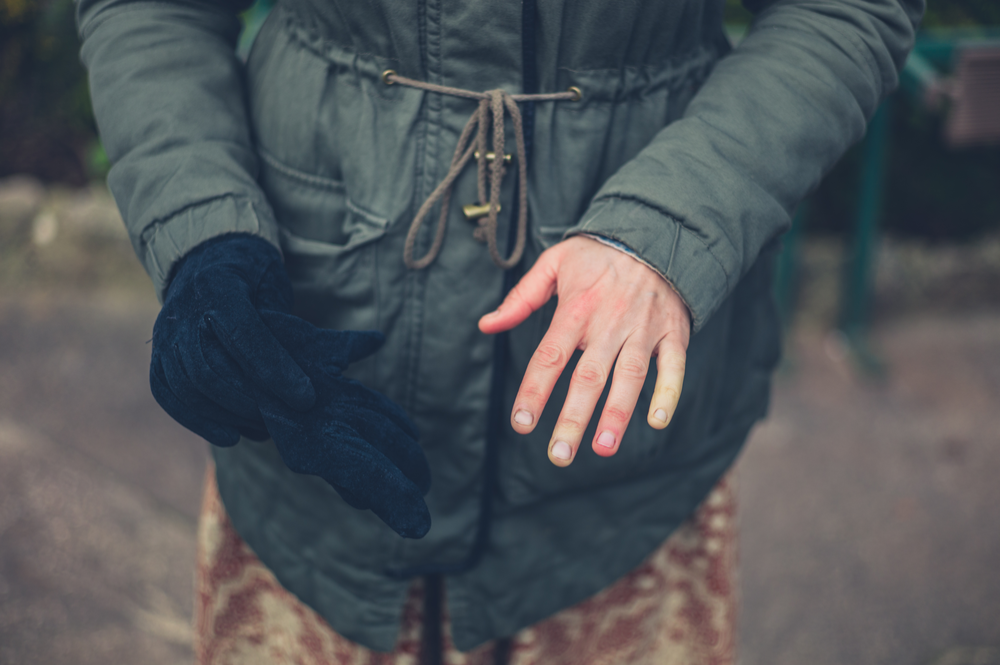By Hand Therapist Pascalle Smith
A cold, chilly British winter can bring with it many troubles for the hands. Many of us suffer from pain and stiffness in our extremities caused by the cold weather, however, some of us are more sensitive than others.
For some people, Raynaud’s disease can make the cold weather incredibly painful. Furthermore, there are several reasons that can cause people to suffer from Raynaud’s in their hands.
What is Raynaud’s disease?
Raynaud’s affects 10 million people in the UK (Raynaud’s and Scleroderma Association 2014). It is more common in women than men and affects any age adult or child. Raynaud’s generally affects fingers and toes, but can also affect your ears, nipples and nose.
We do not fully understand its cause, however we know that small blood vessels in the extremities are over-sensitive to changes in temperature or when the person is exposed to high stress and anxiety. This results in colour changes to the skin; hands may turn red, white or blue for a few minutes or several hours.
Severe attacks can result in numbness as the fingers warm up pain. Sufferers often struggle with everyday activities such as handling small coins, doing up buttons and putting their key in the front door.
Raynaud’s symptoms
- Cold fingers and toes
- Colour changes from white to blue/purple and then red
- Numbness, tingling or pain in the affected area
- Stinging or throbbing pain upon warming or stress relief

Raynaud’s Treatment
Treating Raynaud’s disease is challenging as the severity of the condition varies with each sufferer. Many people do not even realise that there is a name for their condition or that there could be something done to help them.
Symptoms may also be caused by autoimmune diseases, such as rheumatoid arthritis, lupus or scleroderma. Those suffering with Raynaud’s should consider a screening and health check with their GP. Pharmacological therapy is only indicated for those with severe symptoms and functional impairment. Your GP can advise on treatment which may help alleviate the condition.
In many sufferers with mild symptoms wearing warm clothing and avoiding changes in temperature will help.
How to keep your hands warm
- Gentle exercise within your own limitations will help to stimulate your circulation.
- Wear several thin layers to trap heat in against your body.
- If you want to get ahead wear a hat! A lot of heat is lost through our head so keep it wrapped up and warm.
- Thermal clothing is excellent especially underwear which has long sleeves and long legs.
- Warming ‘fuel’ have plenty of hot drinks and food.
- Heating Aids - there is a wide selection of disposable, rechargeable and microwavable aids and gadgets available in shops and online which you may find useful.
- Stop smoking - nicotine constricts blood vessels and has been proven to reduce your body temperature.
- Plan ahead and be prepared - make sure you have hand warmers with you or gloves at all times.


